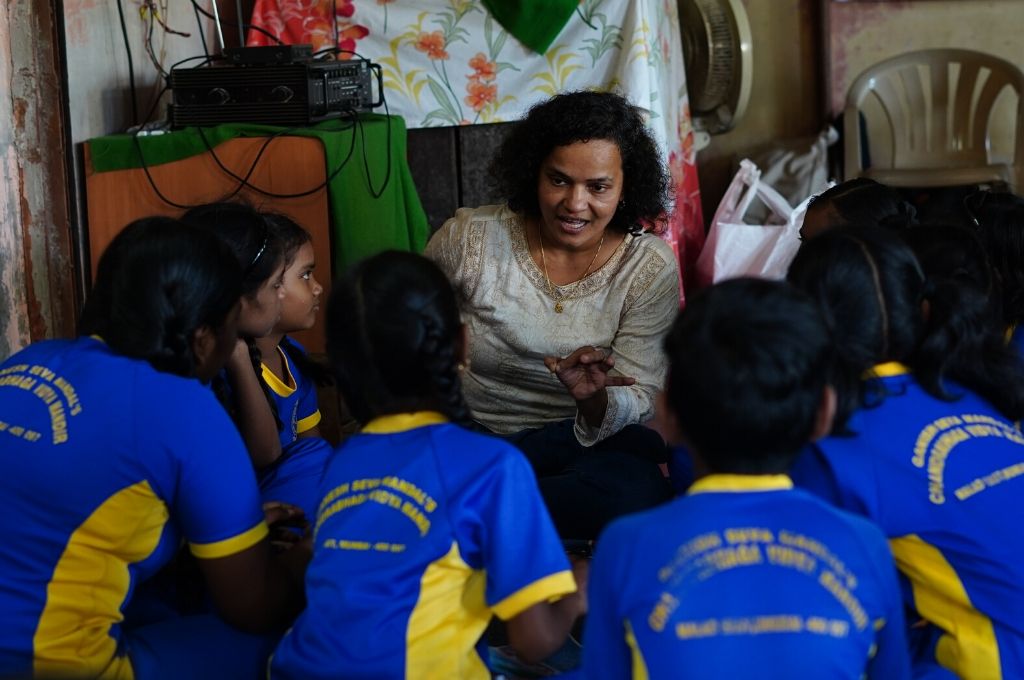As many disasters do, COVID-19 saw a large number of citizens taking to the streets, giving time and assistance to those who need it. Simultaneously, it also saw an increase in the use of technology—communities and teams came together virtually—be it to collaborate, coordinate relief, share news, celebrate birthdays and weddings, or even reflect out loud on their lives and new realities.
In the midst of this, perhaps for the first time, we are presented with an opportunity to rethink corporate volunteering.
Nonprofits are struggling with redesigning their volunteer activities to make them virtual.
Up until now, a large proportion of corporate volunteering has been episodic, hands on, and activity/event based. Examples include painting walls, cleaning a beach, or planting saplings. The outcomes of these activities were then measured on the impact achieved for the community, and sometimes, on the difference it made to the volunteers themselves.
However, with COVID-19, corporates are less likely to be forthcoming on activities that require employees to physically engage. Given this, there is an increasing concern of how they will retain employee interest in volunteering activities. At the same time, nonprofits are also struggling with redesigning their volunteer activities to make them virtual.
Despite this, over the past few months, we at iVolunteer, have seen a significant jump in the number of people approaching us for volunteering opportunities. People want to use their time and skills to support organisations that need them the most. Based on our interactions with them, here’s what we have learned:
What corporates can do
In our experience, virtual volunteering, when designed well and delivered efficiently, can lead to the creation of a stronger sense of community within corporates. Here are some steps companies can take to help ensure this goal is attained:
Bringing people together from across functions and departments to work on one volunteering assignment enhances team bonding and leads to cross-learning. For example, building a nonprofit’s website would entail people with writing, design, and technical skills to collaborate and work together for an extended period of time. Similarly, creating simple math and science worksheets for children to work on can also be easily done by a company, a team, or a department. It can even be made interesting by adding a numerical goal—a 1000 worksheets by 100 people in 10 days. These types of campaigns create great energy across the company, which is much needed at this time.

Bringing people together from across functions and departments to work on one volunteering assignment enhances team bonding and leads to cross-learning. | Picture courtesy: iVolunteer
With logistics of in-person volunteering becoming irrelevant, employees can now choose to volunteer with multiple organisations. Giving them this flexibility, and helping them match their skill level with what partner nonprofits need, is a great way to deepen their strengths, perspectives, as well as passion for a cause.
Even today, volunteering opportunities have helped corporate employees with their soft skills (team building, negotiating) and leadership development. Can companies begin to set this as the primary objective? Corporate teams should look at an employee’s learning goals and see how the gaps can be filled with smartly designed volunteering activities. This lens will not only enable more engaged volunteering, but it might also lead to more innovation on the kinds of volunteering opportunities available.
Related article: Making employee volunteering work
What nonprofits can do
The first step nonprofits need to take is acknowledging that virtual volunteering is the new normal, even if it is for the near future. Once teams have accepted that, here are ways they can make room for this new reality:
Organisation leadership can push their teams to explore what aspects of their existing work can be done by a virtual volunteer. To do this, identify skill gaps and divide them into things the team should learn (for example, Excel proficiency) and tasks a volunteer could take on (for example, digital marketing). This exercise can be done with field workers as well—for example, we have seen organisations bring in volunteers to help their field staff make smarter use of their phones and other technology.
If your previous volunteer engagement was dependent on interaction with the community, how can that be replicated virtually? For example, think about whether volunteers can be engaged to deliver phone based training/mentoring with community members, or whether they can develop something (like recorded audio stories) that can then be shared with members of the community.
This is the person on the nonprofit’s team who is reaching out, managing, and engaging regularly with virtual volunteers. The success of the virtual volunteering engagement is almost 100 percent dependent on how responsive and committed this team member is. Therefore, someone who is comfortable with virtual communication, extroverted, and proactive, is ideal.
—
Do more
- If you’re interested in volunteering, check out ConnectFor and iVolunteer for opportunities.
- Go through the resources on iVolunteer for corporates and nonprofits looking to engage in virtual volunteering.






